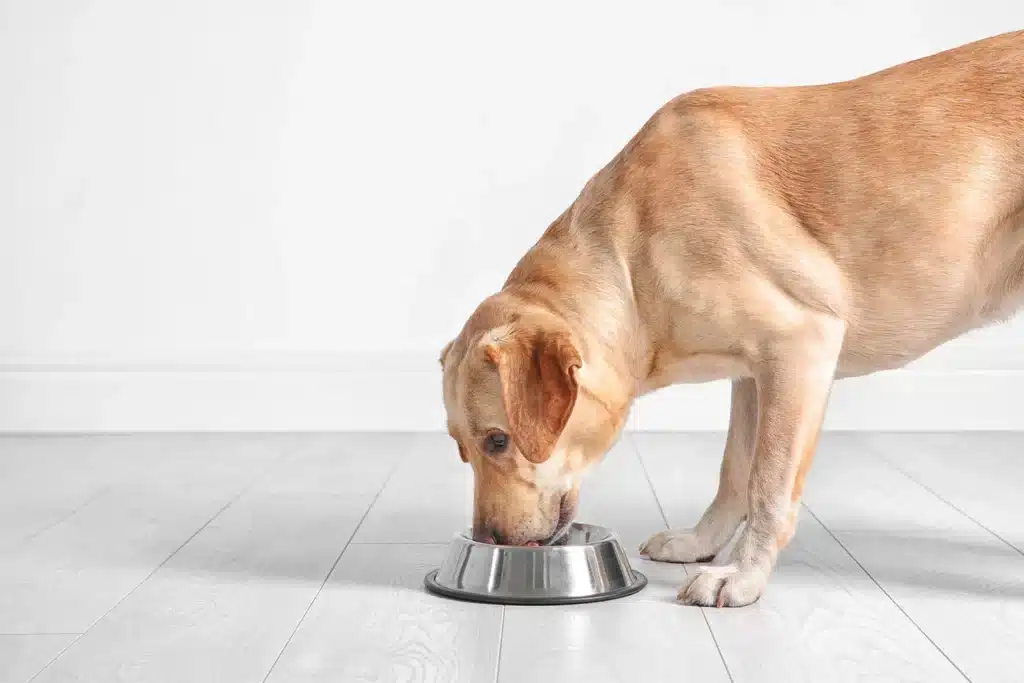Dogs usually love to eat, so it’s normal to feel concerned if your dog is suddenly not interested in his bowl of dog food anymore.
If this behaviour is accompanied by preoccupying symptoms, such as vomiting or fatigue, you should see a veterinarian as soon as possible. But if your dog seems healthy and has lost his appetite, you can solve this problem alone.
Learn how to improve a dog’s appetite with these nine tips.
Try to figure out why your dog lacks appetite
Before you try to improve your dog’s appetite, you should figure out why he doesn’t want to eat in the first place. Could your dog be stressed out because of significant changes in his routine? Have you recently moved, welcomed a new pet or baby, renovated your home, or changed your daily routine? Maybe your dog has a stomach ache or other hidden symptoms of a food allergy, which can affect appetite. To easily determine if this is the cause, you can use an at-home pet allergy test to help pinpoint potential triggers and get your dog back to feeling good. Or perhaps your dog is simply picky or likes the attention he gets when he refuses to eat his food.
Add something new and exciting to his food bowl
Add something new to his food bowl to instantly improve your dog’s appetite. If you feed him dry kibble, you could soak it in dog gravy or bone broth. If you feed him wet dog food, try topping it with dog peanut butter, chopped chicken breast, low-calorie cottage cheese, or cooked pumpkin. You can also try bullystick. The goal is to make his food smell and taste more appealing.
Heat his food to make it smell tastier
Warm food usually smells tastier. Try heating his meals to encourage your dog to eat his dog food. Wet food can be warmed in the microwave for a few seconds. Dry kibble can be warmed by adding hot water or bone broth. This could be all you need to do to improve your dog’s appetite.
Reduce the number of treats your dog eats
Your dog might have lost his appetite because he enjoys too many daily treats. If you give him table scraps or reward him with a dog treat every time he does something you’re proud of, it’s normal for him to lose interest in his food bowl. Or perhaps he is too full to eat his meals. To improve his appetite, reduce the number of treats you give him.
Try hand-feeding him
Your dog might have lost his appetite because of an injury or illness. Now that he is recovering, you could encourage him to eat by hand-feeding him dry kibble a few times weekly. Allow him to eat from your hand while praising him for eating in a soothing voice. Please don’t do it for every meal. He could refuse to eat from his bowl.
Place his food bowl in a quiet area
A simple location change could be all that needs to be considered to determine how to improve a dog’s appetite. Why? Because some dogs get nervous if they have to eat in a room with a lot of activity.
Place your dog’s food and water bowls in a quiet area where he can eat without being disturbed. If you have other pets, ensure each has its feeding station. If your dog refuses to eat because he craves attention, feeding him in a quiet area and ignoring him while he eats could solve the problem.
Feed him a different type or brand of dog food
Some dogs can become picky eaters overnight. If you suspect your dog might be bored with his food, remember that variety is the spice of life for him, too. Try feeding him a different type or brand of dog food from the best pest stores in Canada. If you constantly feed him dry kibble, give him wet food to see if he will eat it. You could also buy different food flavours each week, so he won’t get bored.
Make sure he gets more exercise each day
Exercising daily should stimulate your dog’s appetite and make him look forward to his meals. Take him for a walk each day or take him to the dog park so he can run around and play with other dogs. If you’re too busy to engage in physical activity with your dog daily, consider hiring a dog walker.
See a veterinarian if you suspect your dog might be sick
If your dog refuses to eat, no matter what you do, take him to the vet. And if your dog seems sick or in pain, it’s important to see a veterinarian as soon as possible. Your dog could be refusing to eat because of dental problems, but he could also have some serious issues such as parasites, digestive problems, or even a knot in his stomach.
















